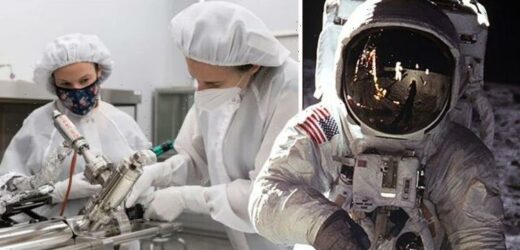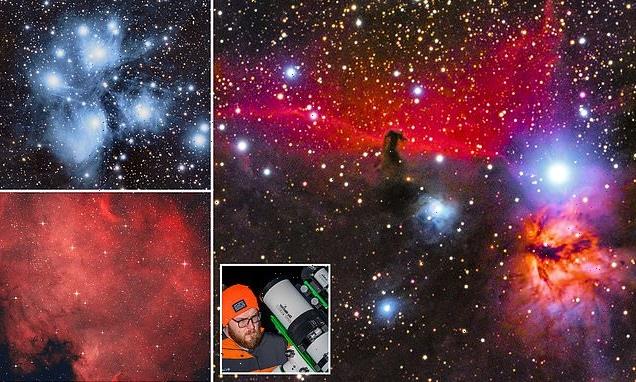Apollo 11: Expert addresses ‘fake’ moon landing conspiracy
We use your sign-up to provide content in ways you’ve consented to and to improve our understanding of you. This may include adverts from us and 3rd parties based on our understanding. You can unsubscribe at any time. More info
In 1972, NASA launched its final mission of the Apollo program – the last time humans set foot on the Moon. During this mission, the two astronauts, Eugene Cernan and Harrison “Jack” Schmitt, collected two lunar samples inside container tubes to bring back to earth. Of these samples, one of them was kept in a vacuum-sealed container, perfectly preserved, while the other was left in an unsealed container.
Now, scientists at NASA are finally prepared to open up the sealed container, 50 years after it was first collected.
According to experts at NASA, the reason they waited for so long to study the sample was so that they could wait for technology around them to evolve.
Lori Glaze, director of the Planetary Science Division, said: “The agency knew science and technology would evolve and allow scientists to study the material in new ways to address new questions in the future.”
The US Space agency opened the unsealed tube in 2019, and used the preserved layers of the lunar soil to study how landslides can occur in airless locations.


With this sealed tube, researchers hope the sample will allow for new insights into soils and rocks, but also gas.
In particular, researchers hope the tube contains substances known as volatiles, which evaporate at normal temperatures, such as water ice and carbon dioxide.
To ensure the gas is preserved, the scientists have kept the tube at really cold temperatures, hoping it still contains a trace of the substance.
In order to extract and collect the gas, NASA plans to use a special device called a manifold, designed by a team at Washington University.

They also plan to use another tool developed by the European Space Agency, dubbed the “Apollo can opener”.
This device will pierce the tube sample and capture the gases as they escape.
The process of opening the sealed tube has already begun, and so far the seal of the inner sample appears to be intact, NPR reports.
If the researchers are able to extract the sample, they will be able to use modern mass spectrometry technology to identify them.
DON’T MISS:
Putin’s nuclear threat to UK: Nine locations that could be obliterated [INSIGHT]
Xi Jinping on path to conflict with Putin as China could STARVE [REPORT]
Chernobyl crisis: Lukashenko turns on Putin to secure nuclear plant [ANALYSIS]


The sample could also be divided up into smaller samples for other researchers to study.
Francesca McDonald, who is leading the project at ESA, said: “Each gas component that is analyzed can help to tell a different part of the story about the origin and evolution of volatiles on the Moon and within the early Solar System.”
Ryan Zeigler, the Apollo sample curator at NASA, noted that, a decade after the plan was proposed, the project is stirring excitement.
He believes that with the new tools that researchers have, there’s now “the unique equipment to make it possible.”
Source: Read Full Article


